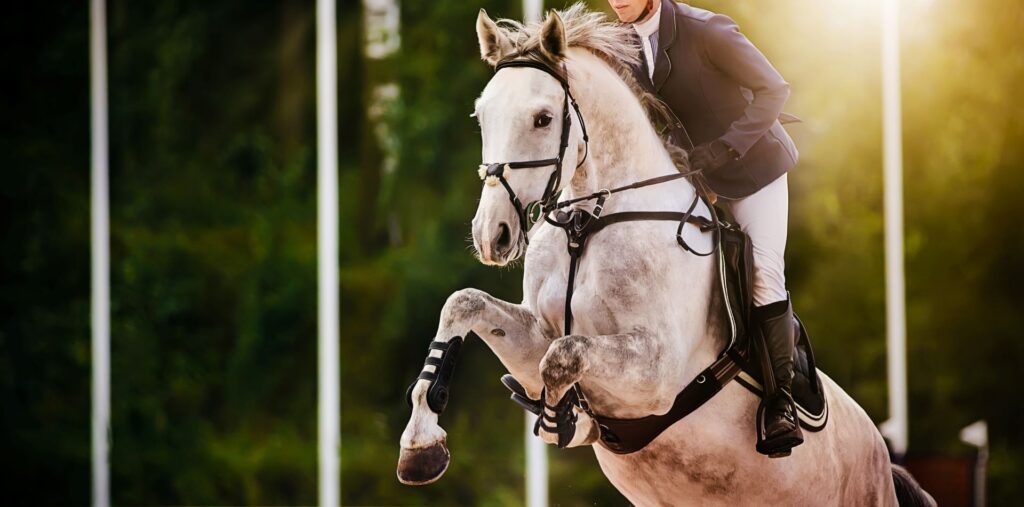Investing in elite show jumping horses presents a unique and often overlooked opportunity within the world of high-value investments. Unlike traditional asset classes such as real estate or stocks, the market for these magnificent animals combines the thrill of competitive sports with significant financial rewards. However, potential investors must navigate a complex landscape of breeding, training, and competition to maximize their returns. Understanding the intricacies of this market can reveal its potential for substantial profit and diversification of investment portfolios.
The Financial Appeal of Show Jumping Horses
The financial allure of elite show jumping horses lies in their potential to yield impressive returns on investment. High-performance horses can command prices comparable to luxury real estate or rare art. For example, top-tier show jumpers can sell for millions of dollars, with their value increasing through successful competition records and breeding potential. The returns from investing in such horses come not only from their sale but also from prize money, breeding fees, and sponsorship deals.
Moreover, the demand for high-quality show jumpers is global, with affluent buyers from Europe, the United States, and the Middle East driving up prices. This international interest ensures a robust market, less susceptible to localized economic downturns. Investing in show jumping horses also offers the benefit of portfolio diversification. Unlike stocks or bonds, the value of these horses is not directly correlated with traditional financial markets, providing a hedge against economic volatility.
Case Studies: Success Stories in Equestrian Investment
Several case studies highlight the lucrative potential of investing in elite show jumpers. Consider the case of Totilas, a dressage horse sold for an estimated $21 million, demonstrating the extreme high-end of the market. While dressage and show jumping are different disciplines, the financial principles remain similar. Totilas’s value was not only in his competition record but also in his breeding potential, which continued to generate income long after his retirement from sport.
Another notable example is the Dutch Warmblood, Big Star, who won gold medals at both the 2012 and 2016 Olympic Games. Following his Olympic success, Big Star’s value soared, and his offspring became highly sought after. Investors who recognized his potential early on reaped significant rewards through both his competition success and his breeding career.

Maximizing Profits: Strategies and Expert Insights
Maximizing profits in the world of show jumping horses requires a combination of strategic investment and expert management. Prospective investors should focus on several key factors to ensure success:
- Selection: Choose horses with strong pedigrees, proven performance records, and good health. This often involves working with experienced trainers and breeders who can identify potential stars.
- Training: Invest in top-tier training facilities and professionals. Proper training can significantly enhance a horse’s performance, increasing its value and earning potential.
- Competition: Entering horses in prestigious competitions is crucial. Success in high-profile events boosts a horse’s marketability and price.
- Breeding: Successful show jumpers can generate substantial income through breeding fees. Investing in horses with strong genetics can yield long-term returns beyond their competitive careers.
Expert opinions further emphasize the importance of a comprehensive approach. As renowned trainer John Doe states, “Investing in show jumping horses for sale is not just about buying a horse; it’s about investing in a team. From trainers to veterinarians, every aspect needs to be top-notch to maximize returns.”
Risks and Considerations
Like any high-value investment, the world of elite show jumping horses comes with its risks. Horses are living beings, and their value can be impacted by health issues or injuries. It is essential for investors to mitigate these risks through proper care, insurance, and continuous monitoring of the horse’s health and performance. Additionally, market dynamics can change, influenced by trends in the equestrian world and broader economic conditions.
Investors must also be prepared for the long-term nature of this investment. Unlike stocks or real estate that can offer quicker returns, the process of training, competing, and breeding horses takes time and patience. A thorough understanding of the market and a well-thought-out investment strategy are crucial for success.
Conclusion: The Future of Equestrian Investment
Investing in elite show jumping horses offers a unique blend of financial rewards and the excitement of competitive sports. With careful selection, strategic management, and a focus on both competition and breeding, investors can achieve substantial returns. The global demand for high-performance horses ensures a vibrant market, making this a compelling option for those looking to diversify their investment portfolios. Embracing the complexities and opportunities within this niche market can lead to exceptional financial outcomes and a rewarding investment experience.
Picture Credits:
Lemonsoup14 – stock.adobe.com
Valeri Vatel – stock.adobe.com

